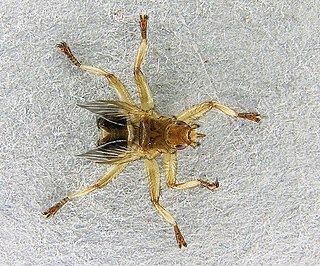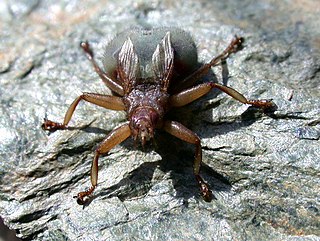
The common swift is a medium-sized bird, superficially similar to the barn swallow or house martin but somewhat larger, though not stemming from those passerine species, being in the order Apodiformes. The resemblances between the groups are due to convergent evolution, reflecting similar contextual development. The swifts' nearest relatives are the New World hummingbirds and the Southeast Asian treeswifts.

The Pacific swift or fork-tailed swift is a species of bird that is part of the Swift family. It breeds in eastern Asia. It is strongly migratory, spending the northern hemisphere's winter in Southeast Asia and Australia. The general shape and blackish plumage recall its relative, the common swift, from which it is distinguished by a white rump band and heavily marked underparts. The sexes are identical in appearance, although young birds can be identified by pale fringes to the wing feathers that are absent in adults. This swift's main call is a screech typical of its family. It is one of a group of closely related Asian swifts formerly regarded as one species.

Hippoboscoidea is a superfamily of the Calyptratae. The flies in this superfamily are blood-feeding obligate parasites of their hosts. Four families are often placed here:

The bird genus Apus comprise some of the Old World members of the family Apodidae, commonly known as swifts.

Hippoboscidae, the louse flies or keds, are obligate parasites of mammals and birds. In this family, the winged species can fly at least reasonably well, though others with vestigial or no wings are flightless and highly apomorphic. As usual in their superfamily Hippoboscoidea, most of the larval development takes place within the mother's body, and pupation occurs almost immediately.

Crataerina pallida, the swift lousefly, is a species of biting fly in the family of louse flies Hippoboscidae. These flies are commonly encountered in the nests of the common swift in Europe and Asia.

Crataerina is a genus of louse flies in the family Hippoboscidae. All are parasites of birds, feeding on the blood of various species of Apodidae (swifts) and Hirundinidae. The genus is sometimes spelled Craterina.
Lipoptena mazamae, the Neotropical deer ked, is a fly from the family Hippoboscidae. They are blood-feeding parasites of the white-tailed deer - Odocoileus virginianus in the southeastern United States and Central America, the red brocket deer - Mazama americana in Mexico to northern Argentina, and also an incidental parasite of domestic cattle, Cougars - Puma concolor, and man.

Hippobosca is a genus of flies in the family Hippoboscidae. There are seven known species. There are numerous synonyms.
Ortholfersia is a genus of biting flies in the family of louse flies, Hippoboscidae. There are 4 known species. All species are parasites of macropods.
Allobosca is a genus of biting flies in the family of louse flies, Hippoboscidae. There is only one known species, Allobosca crassipesSpeiser, 1899. It is a parasite of lemurs. It has only rudimentary wings.
Ornithophila are a genus of biting flies in the family of louse flies, Hippoboscidae. There are two known species. Both species are parasites of birds.

Ornithomyinae is a subfamily of the fly family Hippoboscidae. All are blood feeding parasites, for the most part on birds, though some have mammals as hosts.
Fork-tailed swift is the historic name of a kind of bird which has since been divided taxonomically into four species. It could refer to any of four different species of swifts:
Salim Ali's swift is a small bird, superficially similar to a house martin. It is, however, completely unrelated to those passerine species, since swifts are in the order Apodiformes. The resemblances between the groups are due to convergent evolution reflecting similar life styles.
Blyth's swift, is a small bird, superficially similar to a house martin. It is, however, completely unrelated to those passerine species, since swifts are in the order Apodiformes. The resemblances between the groups are due to convergent evolution reflecting similar life styles.
Cook's swift is a small bird, superficially similar to a house martin. It is, however, completely unrelated to those passerine species, since swifts are in the order Apodiformes. The resemblances between the groups are due to convergent evolution reflecting similar life styles.
Crataerina melbae is a species of biting fly in the family of louse flies Hippoboscidae. Its hosts are swift species including the Alpine, Pacific, Common and mottled swifts.

The Apodinae are a subfamily of swifts and contain the following species:

Crataerina hirundinis is a species of flies belonging to the family Hippoboscidae. It was formerly placed in its own genus, Stenepteryx.









